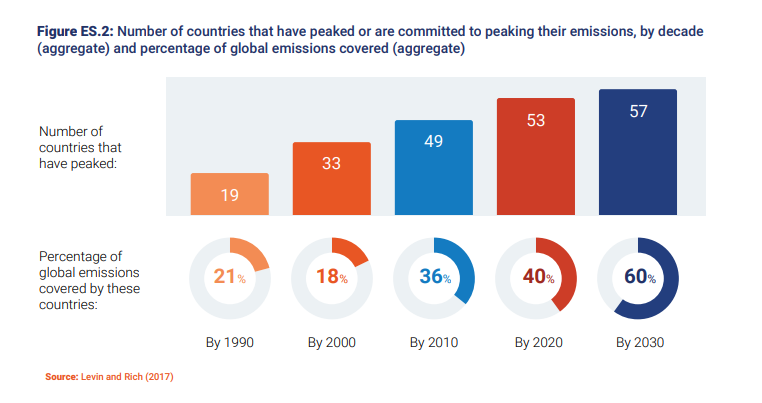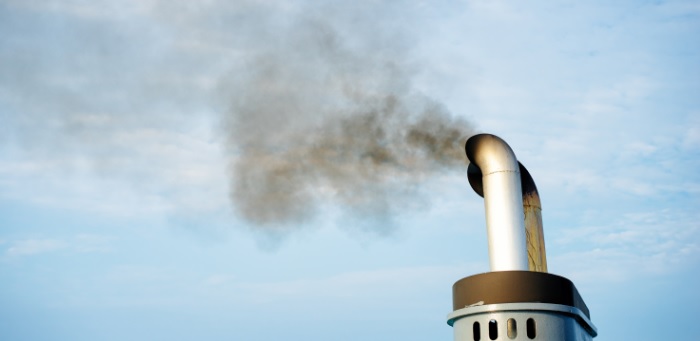The UN Environment issued its annual Emissions Gap Report providing an assessment of current national mitigation efforts and the ambitions countries have presented in their Nationally Determined Contributions, under the Paris Agreement on climate change. The report identifies current commitments by states as inadequate to bridge the emissions gap by 2030, while it reveals that there is no sign of improvement on GHG emissions.
The goal of the Paris Agreement on climate change, as agreed at the Conference of the Parties in 2015, is to keep global temperature rise this century to well below 2 degrees Celsius above pre-industrial levels. It also calls for efforts to limit the temperature increase even further to 1.5 degrees Celsius.
Key findings from the report include:
- Current commitments expressed in the NDCs are inadequate to bridge the emissions gap in 2030. Technically, it is still possible to bridge the gap to ensure global warming stays well below 2°C and 1.5°C, but if NDC ambitions are not increased before 2030, exceeding the 1.5o C goal can no longer be avoided. Now more than ever, unprecedented and urgent action is required by all nations. The assessment of actions by the G20 countries indicates that this is yet to happen; in fact, global CO2 emissions increased in 2017 after three years of stagnation.
- Global greenhouse gas emissions show no signs of peaking. Global CO2 emissions from energy and industry increased in 2017, following a three-year period of stabilization. Total annual greenhouse gases emissions, including from land-use change, reached a record high of 53.5 GtCO2 e in 2017, an increase of 0.7 GtCO2 e compared with 2016. In contrast, global GHG emissions in 2030 need to be approximately 25 % and 55 % lower than in 2017 to put the world on a least-cost pathway to limiting global warming to 2o C and 1.5 oC respectively.

- The gap in 2030 between emission levels under full implementation of conditional NDCs and those consistent with least-cost pathways to the 2°C target is 13 GtCO2 e. If only the unconditional NDCs are implemented, the gap increases to 15 GtCO2 e. The gap in the case of the 1.5°C target is 29 GtCO2 e and 32 GtCO2 e respectively. This gap has increased compared with 2017 as a result of the expanded and more diverse literature on 1.5°C and 2°C pathways prepared for the IPCC Special Report.
- Countries need to strengthen the ambition of NDCs and scale up and increase effectiveness of domestic policy to achieve the temperature goals of the Paris Agreement. To bridge the 2030 emissions gap and ensure long-term decarbonization consistent with the Paris Agreement goals, countries must enhance their mitigation ambition. Enhanced ambition in the NDCs sends an important signal regarding mitigation commitment, both internationally and domestically. However, domestic policies are crucial to translate mitigation ambition into action.
- Non-state and subnational action plays an important role in delivering national pledges. Emission reduction potential from non-state and subnational action could ultimately be significant, allowing countries to raise ambition, but the current impacts are extremely limited and poorly documented.
- Fiscal policy reform can play a key role in creating strong incentives for low-carbon investments and reducing GHG emissions. Revenues from carbon pricing can be used for reducing other taxes, increase spending on social issues and/or compensating low-income households. Well-designed fiscal reform packages can reduce the costs of mitigating emissions, thereby making these fiscal reforms more socially acceptable. The use of carbon pricing to reduce GHG emissions is still only emerging in many countries and generally not applied at a sufficient level to facilitate a real shift towards low-carbon societies.
- Accelerating innovation is a key component of any attempt to bridge the emissions gap, but it will not happen by itself. Combining innovation in the use of existing technologies and in behaviour with the promotion of investment in new technologies and market creation has the potential to radically transform societies and reduce their GHG emissions.
Explore more herebelow:

































































